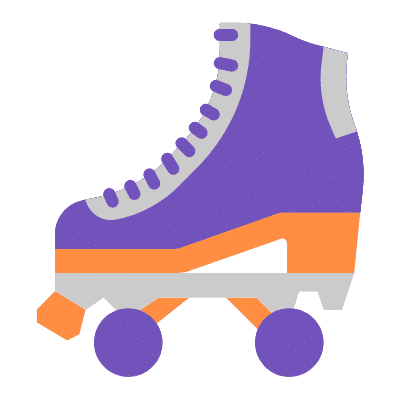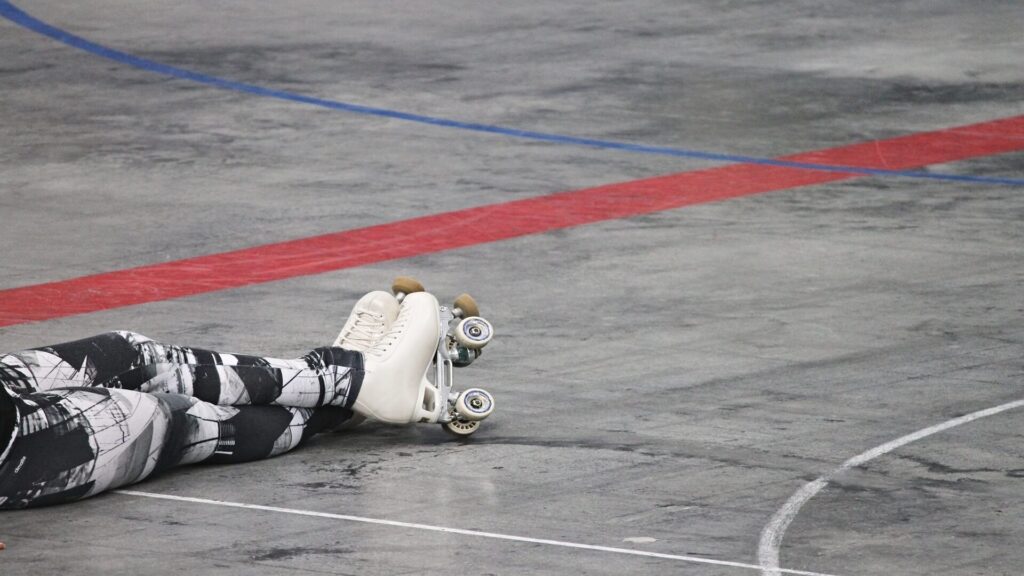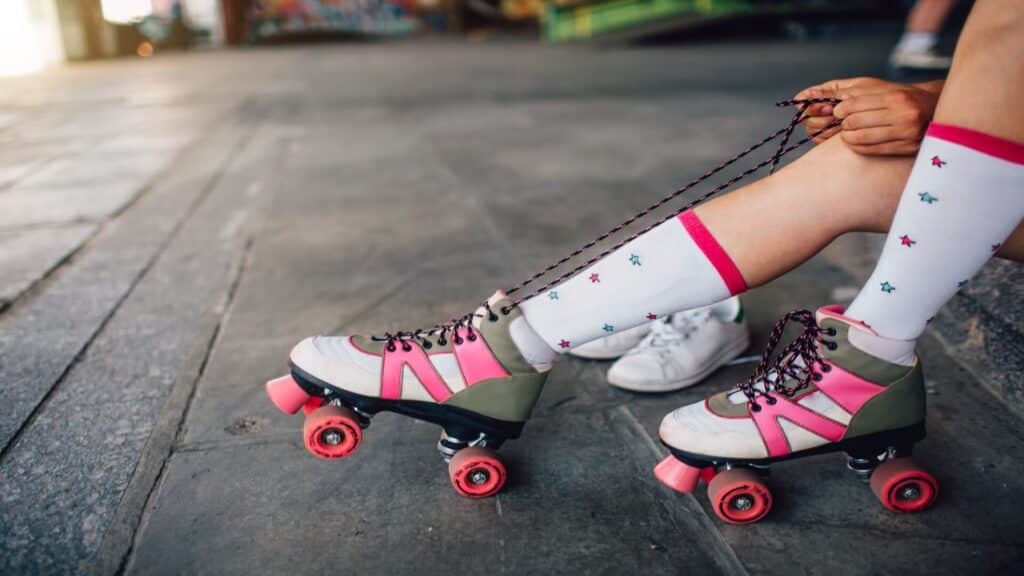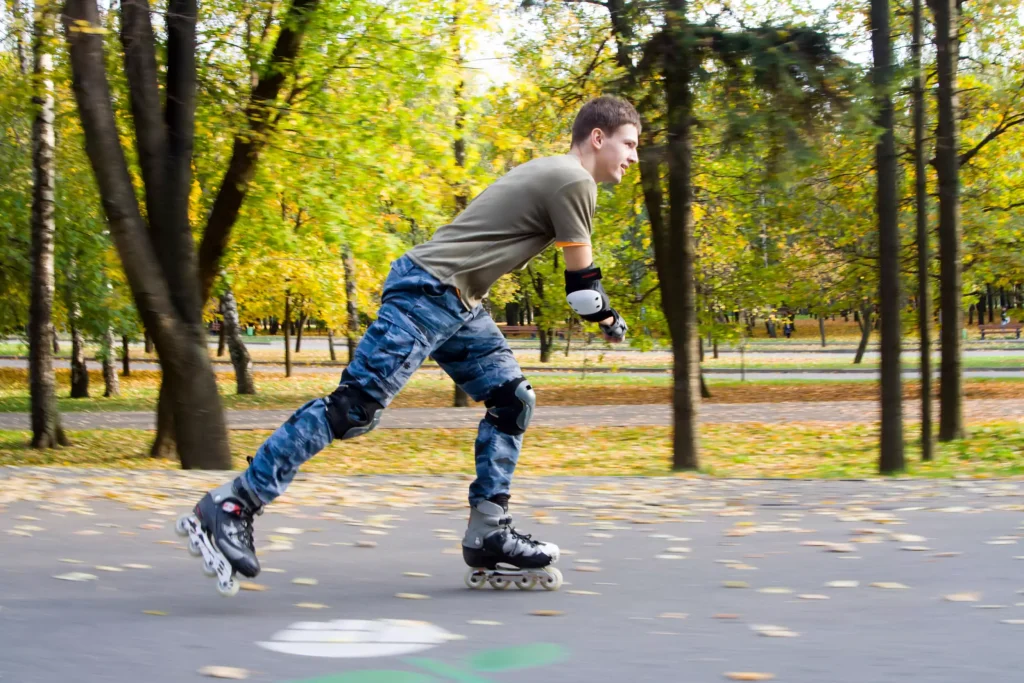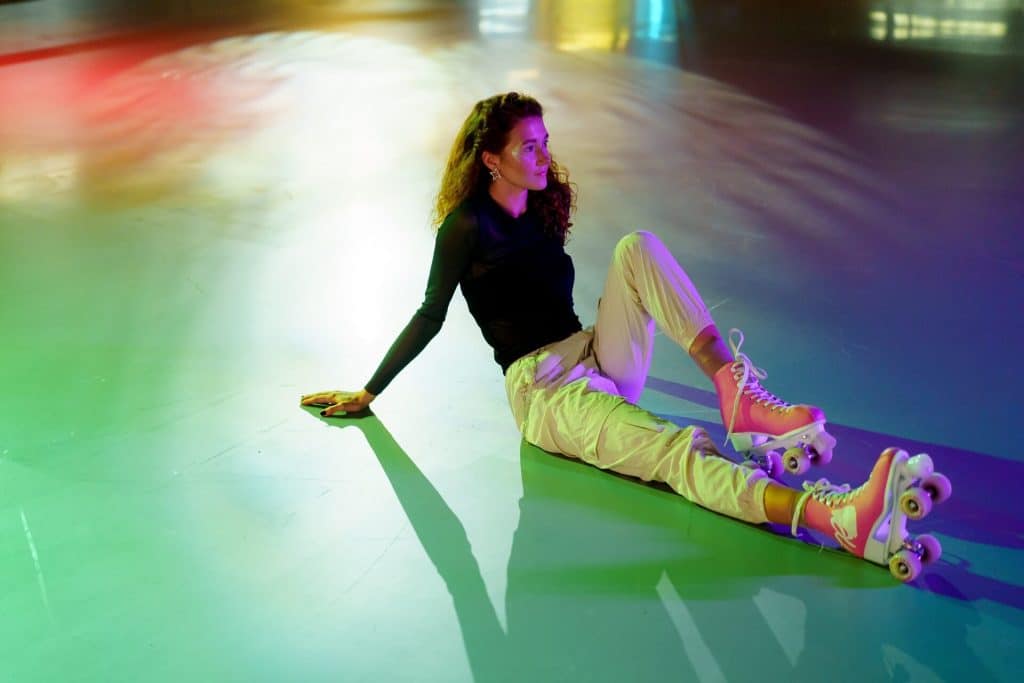As a beginner roller skater or a potential member of a roller skating team, you may wonder where you can practice roller skating. It’s common for people to ask where to practice roller skating, considering its increasing popularity.
Where are some nice spots to go roller skating? Tennis courts, basketball courts, parking lots, school tracks, and other similar surfaces are perfect for roller skating. Well, you can’t just start with any kind of school track, basketball court, or parking lot. So let’s share some ideas about where to practice roller skating.
As an aspiring skater, you must know that not all locations or environments suit skating. Therefore, before purchasing your roller skate, you can search for likely skating rinks in your area.
Interestingly, you don’t have to pay for these venues in this article. Instead, practicing daily will help improve your skills and experience. So, let’s explore the likely place to start without further ado.
Table of Contents
What to Look for in a Skating Surface
When picking a spot to practice skating, an important factor is the quality of the surface. Smoothness, grip, and lack of obstacles are key features to look for. The best surfaces will be flat, even, and free of cracks, bumps, pebbles, sticks, and other debris. Surfaces like polished wood, smooth concrete, and asphalt are ideal. Wood and plastic surfaces provide better grip for wheels, while concrete and asphalt can be quite slippery. Check that concrete or asphalt does not have a rough texture or aggregate exposure that can vibrate wheels.
Avoid surfaces with raised manhole covers, built-in drains, or protruding wiring that can catch wheels. Grass and packed dirt are hard to skate on smoothly. Also be wary of surfaces that accumulate fallen leaves, gravel, or standing water, which create skidding hazards. Take a walk around without skates first to scout the area. Look for the flattest, cleanest, least obstructed route for the best experience practicing skills.
Best Places To Practice Roller Skating Outdoors
Skate Parks
Outdoor skate parks with bowls, ramps, and rails provide unique terrain to advance roller skating skills. They offer areas to practice turns, jumps, grinds, and balancing on a variety of surfaces. Beginners should stick to mellower sections and work up to steeper ramps as skills progress. Check that inline skates are allowed at the park and wear full protective gear. Arrive during daylight when fewer skaters are present to avoid crowds.
Adhere to park rules and skate carefully near boarders and bikers sharing the space. More advanced skaters can benefit from the challenge of skating parks. Just take it slow and stay within your ability level.
Bike Trails
Paved bike paths and trails are ideal for practicing longer-distance skating. Trails allow working on endurance, stability, and pacing over a variety of distances. Check for nearby rail trails or routes through local parks. Begin with flat, wide trails before trying hills or tight curves. Scout trails beforehand to ensure smooth, hazard-free surfaces. Be extremely alert near intersections, road crossings, and areas of limited visibility.
Pass with care and announce yourself when approaching pedestrians or bicyclists. Trails that loop are best for practice making laps or sprints. Always bring supplies like water and ID when skating long distances from your starting point. Mark your mileage to track improvement over time.
Transit Stations
Subway stations in large cities can be excellent venues to roller skate, especially during off hours or weekends when commuter crowds aren’t present. However, you must adhere to the local laws and watch for signs. This is a great place to learn how to roller skate, but you must pay close attention to the time of day and the season.
Church Parking Areas
Church parking areas are excellent places to practice roller skating because they are rarely used during the week. This means you can grab your skates and head there whenever you want. Look for the church parking areas with smooth black asphalt.
University Campuses
There’s a good chance that your town’s college or local college has covered walkways and places to study, eat, and hang out with other people. If you live around a university campus, you don’t need to search for where to practice roller skating.
Basketball Courts
Use the covered basketball courts at the elementary school in your neighborhood to work on your roller skating. The fact that the back portion courts are conveniently located less than five minutes from your home makes this one of the most popular venues for roller skating practice.
Useful Accessories for Practice
Certain accessories can enhance your roller skating practice experience. Cones, markers, and mini-traffic pylons are great for setting up obstacle courses or slalom courses to improve agility. Portable mini ramps allow you to practice going over inclines and pumping. Skating training bars can provide stability for beginners. Setting up a small playlist on a portable speaker will let you skate to music outdoors.
Other useful accessories include bubble machines to make practice more fun, knee/elbow pads for protection, and mini caution signs or flags if skating near pedestrians. Having some backup wheels, bearings, and skate tools in a pouch allows you to fix equipment quickly. Always pack hydration like water bottles and snacks to refuel. A phone mount or armband lets you film yourself to review the technique.
With the right accessories, you can create diverse and engaging skating drills. The key is bringing things that support your unique practice goals.
Ideas For Places Indoors
How To Practice Roller Skating At Home
You can get creative with setting up a space to practice skating at home. Clear an empty room or basement by moving aside furniture and ensuring no clutter. Smooth, finished floors like wood or tile work best. If only carpet is available, vacuum well and watch for snags. Lay down plastic floor protectors or smooth plywood over the carpet to create a slick surface. Place yoga mats or towels on top of the plastic for cushioning.
Try moving area rugs aside and skating right on the flooring beneath. Use couch cushions, pillows, or exercise mats to soften falls. Enlist family members to assist with makeshift rails or support until you gain confidence. Ensure good lighting and ventilation in the practice area. Tie back cords and clear obstacles. Practice emergency stops and falls to get comfortable.
Check in with housemates before sessions so you don’t collide. While not ideal, practicing at home can be a good option to maintain skills between public skating outings. Take safety precautions to avoid injuries and respect house rules. With creativity, you can temporarily adapt home spaces.
If you wish to practice roller skating at home, this article is about whether you can practice roller skating on carpet? It might come in handy for you.
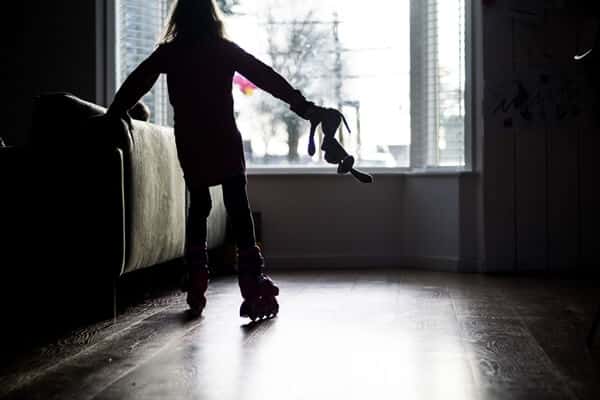
Local Skating Rink
This one is somewhat understandable; however, if you are a beginner at roller skating, it’s possible that you weren’t even aware that they existed. You do now! Although we wouldn’t say the neighborhood skating rink is the best private place to practice, you’ll find plenty of people there roller skating, much like you; thus, it will be simple to mix up with them and become part of the group.
You likely won’t have this option if you reside in a little town. In such a case, you can opt for other alternatives in this article. Furthermore, some local skating rinks mandate skaters to pay a token as a registration fee to use the facilities since the owners privately own and manage them.
We believe you should take advantage of any opportunity to visit your neighborhood roller rink. What is not to love about a controlled climate, enjoyable surroundings, meeting new skaters, and socializing opportunities? In addition, it’s the perfect place to find new friends who share the same passion as you.
Unused Office Or Warehouse Space
Everything is set, but finding an unused office or warehouse space can be difficult. To find a spot, you need to make a few phone calls, know someone, or know someone with a connection.
You can organize other skaters and share the fees if the office or warehouse is expensive. With this, you have somewhere to practice your skating and hone your skills.
Cost Considerations
When choosing where to practice skating, it’s helpful to understand what costs may be involved. Using public spaces like parks, parking lots, trails and courts are free options for skate practice. However, some ideal spaces like indoor skating rinks and private multipurpose rooms typically involve fees. Skating rinks may charge hourly rates, daily admission, or monthly/annual memberships.
Rates range widely based on location and amenities. Expect to pay $5-$15 for a single entry or $50-$100 for monthly memberships at most rinks. Private gym/dance studio spaces often rent by the hour, with hourly rates around $20-50 depending on the city.
Shared warehouse/office spaces split among a skate group can lower individual hourly fees. While free public spaces are more affordable, paid spaces provide advantages like consistent access, facilities, staff supervision, and community. Weigh costs against benefits when selecting a practice space that fits your needs and budget.
Safety Tips for Public Spaces
When roller skating in public areas, it’s important to take proper safety precautions. Be sure to wear protective gear like helmets, knee pads, wrist guards, and elbow pads to prevent injuries from falls. Scan the area before skating and look out for any cracks, debris, or obstacles that could cause you to trip or collide with something. It’s best to skate with a friend so you can look out for each other.
Be aware of your surroundings and watch for pedestrians, cyclists, cars, and other skaters. Skate in control and at a reasonable speed. If listening to music, keep the volume moderate so you can hear your environment. Bring a phone in case of emergencies. Know the local regulations about skating in public spaces and ensure you are allowed to skate in the area. Taking these precautions will help keep you safe while practicing in public areas.
Skating Etiquette
When practicing roller skating in public spaces, it’s important to be mindful of skating etiquette if there are other skaters or pedestrians around. Always skate in the standard direction of flow, usually counterclockwise on a circular track. This prevents collisions from skating head-on. Give audible warnings when passing others by saying “on your left” or “passing on the right”. Pass politely, don’t cut people off.
Keep a safe distance between yourself and other skaters. Avoid unpredictable moves or skating too fast. Be considerate about playing music aloud if others are nearby – use headphones or keep the volume low. Don’t litter or damage facilities. Wait your turn if others are already using a space. Be friendly, share tips, and create a positive skating community. Following basic etiquette keeps everyone safe and ensures we don’t give skaters a bad reputation.
Finding Skating Groups
A great way to discover places to practice roller skating and meet other skaters is to join local skating clubs or meetup groups. Skating clubs may use rinks or other venues for regular practices and social events. Club members can provide recommendations for good outdoor skating spots around town. Meetup groups organize events for skaters to get together and roll around local parks, parking lots, or trails. They provide both a spot to skate and a community to skate with.
Most areas have clubs for various skating styles like roller derby, dance, speed, and general recreational skating. Search online directories or social media for “roller skating club/meetup+your city” to find options. Joining a club or meetup is a fun way to improve your skills with group lessons or guidance. Experienced members also provide tips on skating techniques, equipment, and safe spaces nearby.
Indoor vs. Outdoor Skating Spaces
When choosing where to practice skating, you can consider both indoor and outdoor options. Indoor spaces like skating rinks provide a controlled climate and smooth surface that is unaffected by weather. Rinks allow year-round skating. Music and lighting can enhance the skating experience. Indoor spaces are great for learning skills like turns and stops. However, rinks may require paid admission or memberships. Outdoor spaces offer free skating areas like tennis courts, trails, and parking lots.
Outdoor practice allows working on skills outdoors that you’d use in real environments. However, weather conditions, debris, uneven terrain, and pedestrians can impact the skating surface. Outdoor spaces may not be lit for night skating. Pros and cons to both options depend on your goals – indoors for recreational skating in any season, outdoors to practice in fresh air, and replicate real skate environments. Trying a mix provides versatility.
Conclusion
Finding suitable spaces to practice roller skating takes some research and creativity. From smooth outdoor blacktop to adapted indoor floors, there are many options to consider. Start by evaluating your skill level, goals, budget, and desired amenities to narrow your preferences. Frequent public spaces like bike trails, skate parks, basketball courts, and parking lots offer accessible outdoor venues.
For year-round skating, explore indoor rinks, rented spaces, or adaptable home areas. Joining local skating clubs can uncover great spots while building community. With the proper safety gear, etiquette, and surface conditions, roller skaters can find exciting places to improve their skills. The key is matching practice spaces to your individual needs. With an adventurous spirit and some planning, skaters of all levels will be rolling and gliding in no time.
Did we miss a perfect place to skate? Leave a comment on our Contact Us page about your experience finding where to practice roller skating. You can also check other articles on roller skating below.


